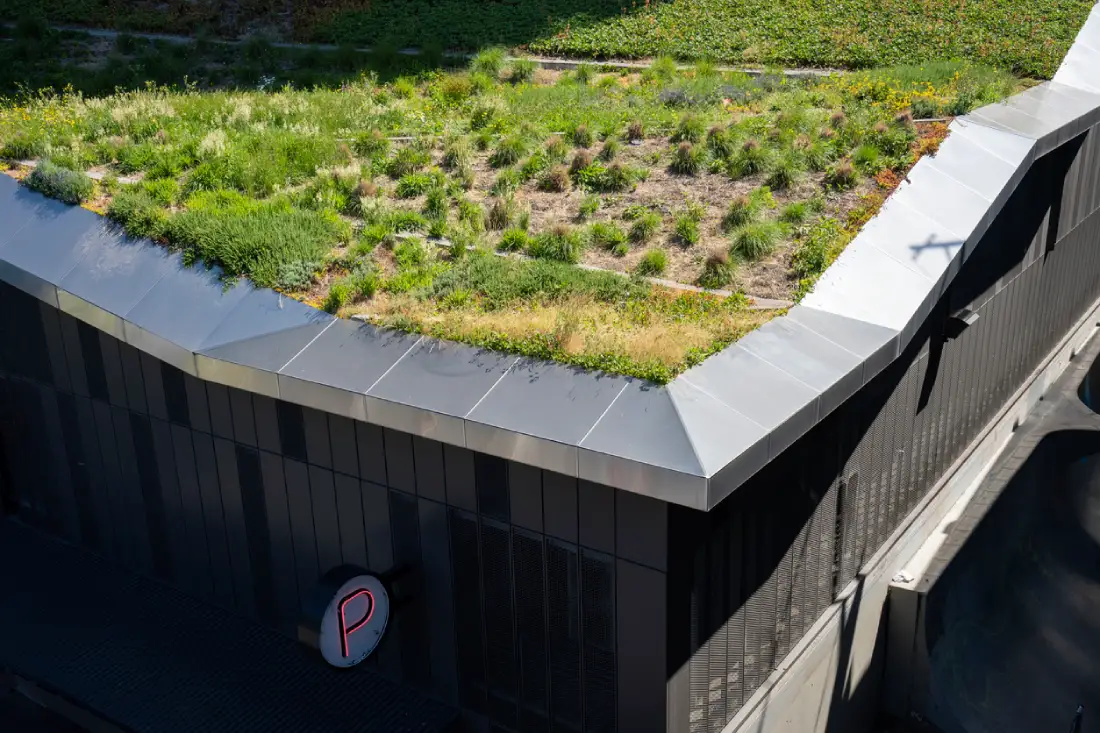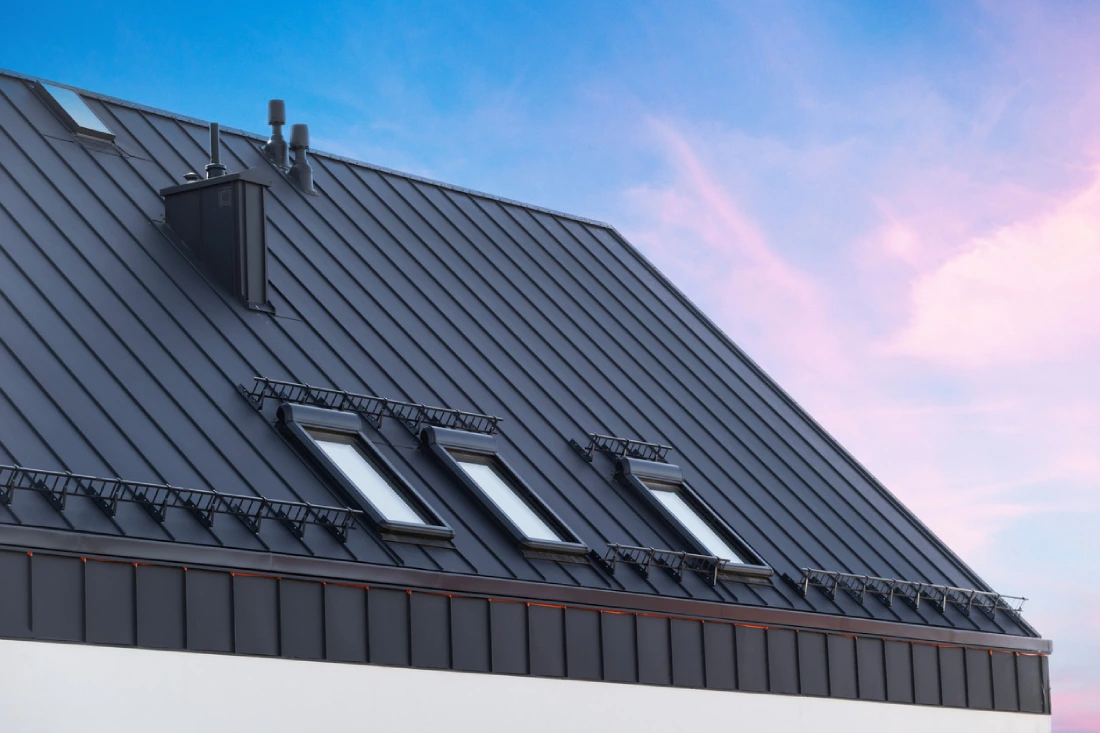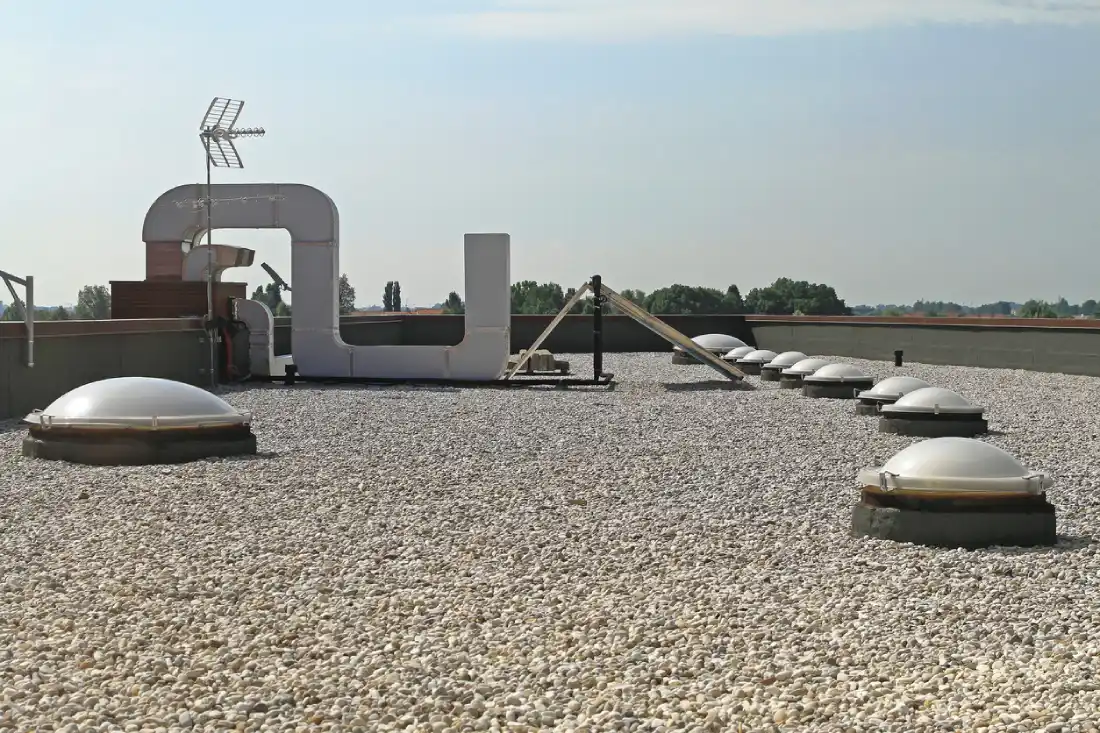
We get it, you get it: every single roofing project comes with its own set of unique demands. In many cases, contractors find themselves at a crossroads where aesthetics, practicality and deliverables must meet. For you, this means that your choice of roof finish is key in finding the right balance. In our latest learning resource, we make this decision easier than ever by exploring three standout roof finishes: green roofs, standing seam profiles and ballasted roofs.
Whether the goal is to create a visually striking feature, a highly functional design, or a seamless combination of both, the right roof finish can make all the difference. Depending on the nature of your project, finding a solution to meet the needs of designers, installers and building owners is absolutely achievable. To start, let’s take a look at green roofs; their benefits and applications.
Green Roofs: The Sustainable, Aesthetic Choice

Green roofs – also known as living roofs – have seen a huge upsurge in popularity over recent years, and from a building owner’s perspective, it’s not hard to see why. Unlike any other roofing finish, this choice offers a perfect blend of beauty, functionality and sustainability. This, among many other reasons, makes green roofs the standout choice for modern construction professionals.
Green roofs are highly popular choices for both residential and commercial projects. Here at Tecron, we’ve found that green roofs are particularly effective in built-up urban environments where green spaces are limited. Beyond that, they’re an essential when it comes to achieving sustainability certifications such as LEED and BREEAM. So, what makes green roofing so appealing?
- Visual appeal: Green roofs transform what would otherwise be a barren, functional surface into a lush, visually striking feature. For buildings in urban environments, they provide a much-needed touch of greenery, softening the harshness of concrete and steel.
- Biodiversity & habitat creation: By cultivating a natural habitat, green roofs support flora and fauna that might otherwise struggle to thrive in built-up areas. They attract pollinators like bees and butterflies, contributing to the local ecosystem and promoting biodiversity.
- Rainwater management: One of the critical roles of green roofs is their ability to manage rainwater effectively. In urban areas prone to heavy, tropical-like rainfall, green roofs help reduce stormwater runoff by absorbing and retaining rainwater. This reduces the pressure on drainage systems and minimises the risk of flooding.
- Improved thermal performance: Green roofs act as natural insulators, reducing heat transfer and improving energy efficiency in buildings. They help keep interiors cooler in summer and warmer in winter, lowering energy costs and contributing to sustainability goals.
Standing Seam Profiles: Timeless Results on a Budget

While green roofs are a strong choice, they are also one of the most costly. Where you’re faced with a more budget-limited project, standing seam roofs present a strong alternative. Traditionally associated with high-end materials like zinc and copper, the cost today of installing genuine metal standing seams can be too high to bear. Fortunately, standing seam profiles offer a more financially-accessible way to replicate this iconic style.
Standing seam profiles can be added to a roof’s waterproofing later, and do a great job of mimicking the visual effect of zinc or copper seams. Luckily for our customers, they can be applied to materials such as Fatra PVC membranes or Polyroof liquid waterproofing systems as a strong, customisable solution. This choice is particularly effective for buildings aiming to combine modern performance with classic design elements.
Below, we’ve listed four of the key benefits you can expect when working with standing seam profiles:
- A budget-friendly choice: Forget using costly zinc or copper – standing seam profiles allow you to achieve that high-end appearance without absorbing the significant costs of investing in these materials.
- Beautiful aesthetics: Whether your customer wants a classic, traditional style or something more sleek and modern, this choice of roof finish can be tailored to meet either objective. This makes them a popular choice among architects looking for ways to enhance a building’s visual appeal.
- Easy to use: Adding these profiles to a waterproofing system is incredibly easy, requiring no specialised skills or tools typically required in metal roofing projects. Naturally, you can expect easier installation and reduced project timelines.
- Lightweight: Unlike traditional metal roofs, standing seam profiles add minimal weight to the structure, making them ideal for retrofitting projects or buildings with weight constraints.
Ballasted Roof: Functionality in Any Application

Last, but certainly not least are ballasted roof finishes: the flexible solution that can be tailored to virtually any design-related or functional requirement. Using materials like gravel, paving slabs or rubber matting ensures your roof provides both protection and usability. Their versatility makes them highly popular in both residential and commercial settings. But how do they work?
It’s simple: ballasted roofs work by placing a layer of ballast – such as gravel or paving – over a roof’s waterproofing membrane. This has a multifunctional purpose, weighing down the membrane while providing a useful walking path for pedestrians. If you’re unsure whether a ballasted roof finish is the right choice, our list of benefits below will help:
- Customizable: Ballasted roofs can be customised to meet the specific needs of your roofing project. For example, gravel can be used for a simple and cost-effective finish, while paving slabs or pedestal systems can create functional walkways and outdoor spaces.
- Durable protection: The ballast layer protects the waterproofing membrane from physical damage and UV exposure, extending the lifespan of the roof you’re working on.
- Usability: Ballasted roofs are an excellent choice for projects that require usable outdoor spaces, such as terraces, balconies, or recreation areas. Rubber matting, for instance, provides a safe, non-slip surface ideal for schools, care homes or exercise areas.
- Efficient drainage: Pedestal systems used in ballasted roofs create free-draining spaces beneath paving slabs, preventing water pooling and ensuring efficient drainage.
- Sustainability:By incorporating recycled materials such as rubber mats, ballasted roofs can contribute to sustainability goals while delivering practical benefits.
Still Unsure? Speak to Our Roofing Experts
Still undecided on what choice of finish is right for your project? Don’t sweat it – your roofing partners at Tecron are here to help. For more information on any of the roof finishes mentioned in this guide, contact Tecron at technical@tecron.ie or call us on +353-91-353545. Alternatively, submit an enquiry via our Contact page. Let us help you create a roof that balances form, function and vision seamlessly.
